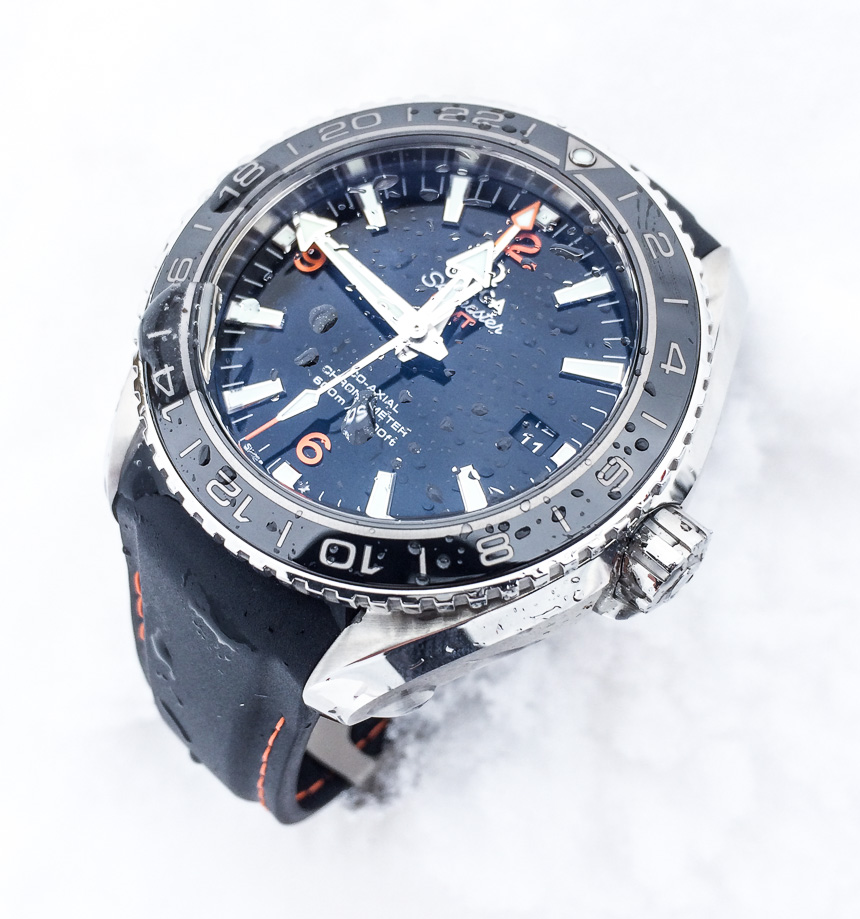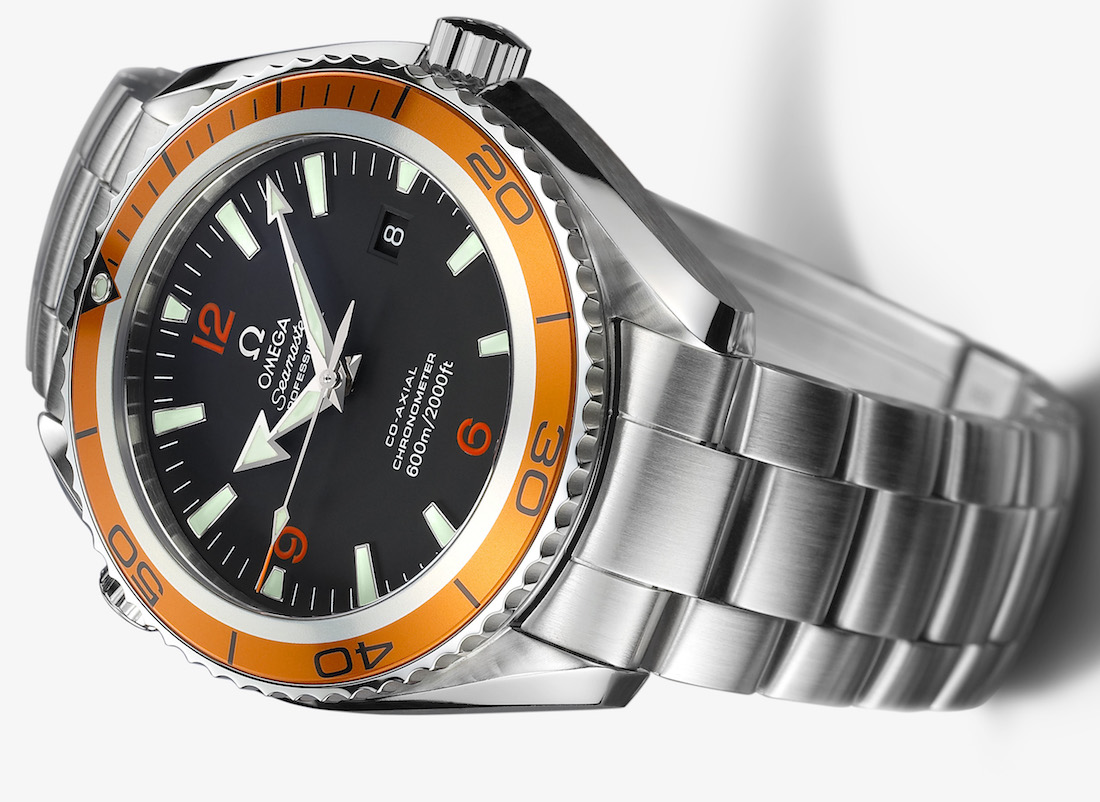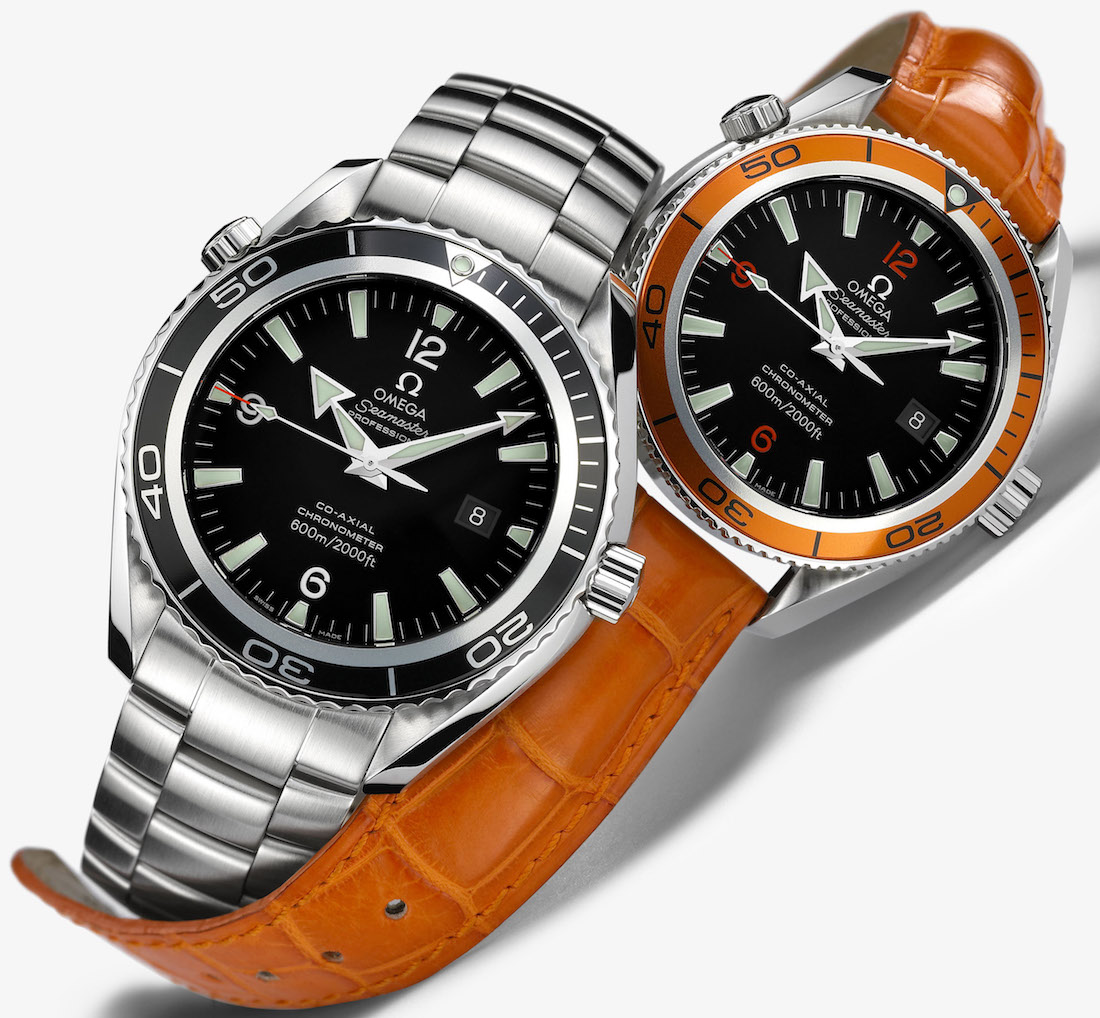-ablogtowatch.com
When texting with friend and fellow aBlogtoWatcher Zach Piña about the Omega Seamaster Planet Ocean, he messaged me the above quote that I think perfectly encapsulates why I find this collection so special. Introduced in 2005, it seems like the Planet Ocean has been around for as long as many of us have been watch lovers and enthusiasts, as a staple in the Omega line that fits in as comfortably as the Speedmaster. In this article I am going to go through the evolution of the Planet Ocean watch and track the various models, major milestones, and short but robust history of this luxury dive watch.
Of course, in modern Omega history, the Planet Ocean came fairly late. The Seamaster Professional arrived in 1993 and was the watch first used in Omega’s second-greatest marketing feat (after the Speedmaster being the “Moon Watch,” of course). Indeed, the Seamaster Professional (SMP) adorned the wrist of Pierce Brosnan’s take on James Bond 007 in 1995’s Goldeneye (the Planet Ocean got this honor over a decade later in 2006’s Casino Royale). After the SMP 300 came the dressier Seamaster Aqua Terra in 2002, with the Planet Ocean arriving in 2005 as the line’s higher end sibling and rounding out the collection.
Too often I find myself frustrated with the historical baggage so many watches I love are saddled with. What I mean by “baggage” can mean a lot of things: unwillingness to innovate because of a romanticized view of a piece’s history; watches focused on anniversaries or years commemorating landmarks; ad nauseam mention of iconic “effortlessly cool” celebrities who wore a watch 50 years ago (seriously, imagine it’s 1970 and watch enthusiasts are losing their minds over what Charlie Chaplin or Cecil B. Demille wore just before the Roaring Twenties). I love that the Planet Ocean line has to deal with none of this and can proudly present itself as a genuinely modern dive watch offering. It’s obviously important to note that that my points above are restricted to the Plant Ocean, not Omega as a whole because that’s an entirely different conversation altogether.
Omega created the Planet Ocean to be a modern luxury dive watch that would compete with the “tried and true” comparable offerings like the Rolex Submariner. It’s also worth noting that the Seamaster line overall has always been intended as more of a luxury piece in the body of a solid tool watch rather than a tool watch that eventually found its way on the wrists of well-heeled watch lovers.
One point of note, I am going to keep this list to non-precious metal models and will also not go through the history of the Planet Ocean chronograph because that discussion, or any discussion of a non-Speedmaster chronograph from Omega would require a thorough side by side look with the various Speedmaster references being made at any given point, and that is a very long conversation for another day. That being said, all the core references, along with the GMT models, and ultra-modern innovations like the Deep Black, will all be accounted for.
THE FIRST GENERATION OMEGA SEAMASTER PLANET OCEAN (2005)
The Planet Ocean was the first diver Omega outfitted with their calibre 2500 movement that featured a co-axial escapement, and it came in three variations when it was launched, which is hilarious compared to the 27 models and 109 variations I see in the catalog now, some thirteen years later in 2018. The first Planet Oceans came in either 42mm or 45.5mm, with a black or orange bezel. The color orange is the unofficial color of the Planet Ocean line, claimed to be one of the most visible colors underwater (a claim I have heard refuted a few times, actually), but I have a feeling the aesthetic stamp was alluring to Omega as well.
1ST GENERATION OMEGA SEAMASTER PLANET OCEAN DESIGN
The model that initially inspired the first Omega Seamaster Planet Ocean collection back in 2005 was the Seamaster 300 ref. 165.024, which dated back to the 1960s. This can be a little counterintuitive when understanding the history of the Planet Ocean since they released a true to the original modern watch in the Seamaster 300 Master Co-Axial back in 2014. While nothing close to a vintage reissue, the first generation of Planet Ocean watches clearly wears this design influence on its sleeve. Or rather, on the design of its bezel, hands, and dial. The Planet Ocean asserted its own style, however, with an aggressively sporty look and touches like a helium escape valve. Later Planet Ocean generations would move on with the times in terms of material and style, securing the collection’s place as a luxury dive watch that is very much “of the moment” and isn’t afraid to evolve.
The first generation of Planet Ocean watches featured the aluminum bezel, about 1/3 of which was the untreated inner ring with the outer 2/3 being done in either black or orange. The 120-click coin edged unidirectional bezel is one of the aesthetic markers and tactile standouts of the Planet Ocean line, joined with the signature helium escape valve at 10 o’clock which has carried through into every Planet Ocean watch. It’s a somewhat vestigial addition that can be about as divisive a feature as date windows, and personally I would probably like the option to not have a helium escape valve.
The matte black lacquered dial along with the faceted arrowhead hour and minute hands (with Super-LumiNova) make for a highly legible and attractive dial across the range. I love the Arabic numerals at 6, 9, and 12 o’clock and the date window is about as least intrusive as it can be, since the background of the window matches the dial and there’s no magnifying lens over it. The simple, attractive design coupled with luxury finishes (that have been updated and upgraded with time, as this article will lay out) has been a cornerstone towards the success of the Planet Ocean.
1ST GENERATION OMEGA SEAMASTER PLANET OCEAN CASE
Being a top-tier Omega dive watch, the Planet Ocean watches are all water-resistant to 600m (2,000 feet) – double the resistance of the Seamaster Professional of the time. Earlier models like these first generation watches have a steel caseback with the engraved Omega Seamaster logo featuring the recognizable seahorse, aka Hippocampus. Interestingly and of note, Omega claims that with the Helium escape valve unscrewed the watch is still decently water-resistant to 50m. I assume this is relevant if only to ease the minds of forgetful owners who like to play with their watches.
One final thing to mention about all Planet Ocean watches, old and new. These have always been thick watches, with some recent chronograph versions reaching a downright fat measurement of 18.87mm thick. The 42mm version of the first generation Planet Ocean doesn’t approach this level of thickness at 14.5mm thick, but the 45.5mm model is a hefty 17mm thick. To compare, a 41mm wide Seamaster Professional at the time would have been about 12mm thick.
What’s always been impressive about the Planet Ocean is the fact that though it features a domed sapphire crystal, it has always remained highly legible due to the smart decision to use ample anti-reflective coating. More than one Planet Ocean owner I’ve talked to has pointed out how great the AR is, and I’d absolutely agree with them as I’ve always been impressed with the clarity on the dial of my own PO.



No comments:
Post a Comment